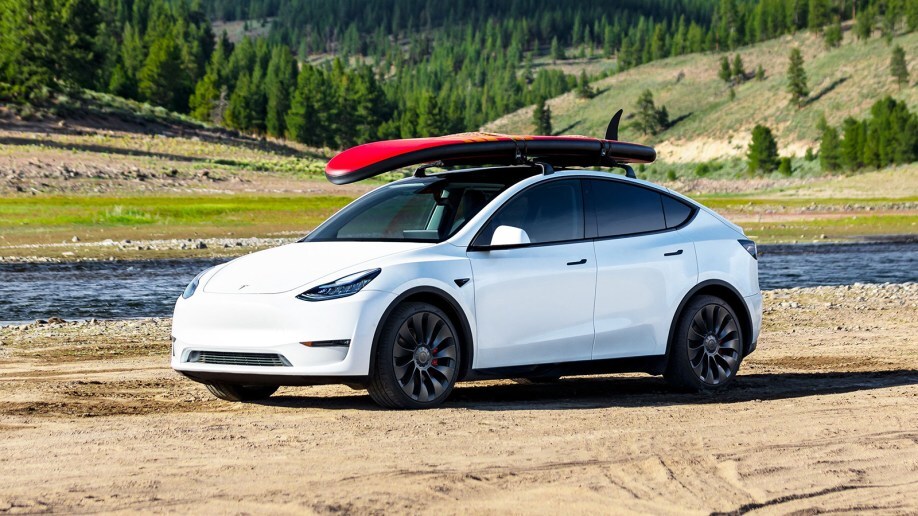
The numbers come from the credit reporting agency Experian, which also tracks new car registrations.
Overall, electric vehicles made up 7% of new car registrations in the first five months of the year, Experian says. That’s up from 4.6% for the same period in 2022.
The Model Y drove much of that growth. New registration for Tesla’s least-expensive SUV grew by 103% between January and May. The Model Y currently starts at $47,740. Registrations for the Model 3 sedan, Tesla’s least-expensive product at $40,240, grew 18%.
The company’s two more-expensive products have not seen the same growth. Registrations for its Model X SUV ($98,490) gained just 7%, while its Model S sedan ($88,490) saw a stunning 59% drop.
The World’s Best-Selling Vehicle
The Model Y became the world’s best-selling vehicle last quarter, driven largely by a sales surge in China. The company has cut prices on both the 3 and Y several times this year. The moves helped launch a price cut war in the electric vehicle (EV) market, with other automakers answering by slashing prices on competing models.
Federal electric car tax credits also help. Both the Model 3 and Model Y now qualify for a $7,500 tax rebate not available on cars built outside North America.
Related: How Do Electric Car Tax Credits Work?
EV Prices Down 20% In One Year
EV prices peaked last June, with the average electric car selling for $66,390, according to Kelley Blue Book data. This June, the average EV sold for $53,438 – a 20% drop in just one year.
Price Cuts Part of a Larger Strategy
The price cuts are part of a shift in strategy at Tesla. The company now aims to put as many cars on the road as it can, even if each sale is less profitable than it was a year ago. The goal isn’t to sell cars. It’s to sell software downloads later.
CEO Elon Musk told investors in April, “We’ve taken a view that pushing for higher volumes and a larger fleet is the right choice here versus a lower volume and a higher margin.”
Many automakers plan to sell subscriptions to car features for monthly fees in the near future.
Tesla is no stranger to shifting revenue sources. The company lost money on every car it sold for nearly its first 18 years but grew thanks to money it earned selling regulatory credits to other automakers. That growth positioned it to become the world’s most profitable automaker when the regulatory credits market ran dry.
It has recently found another revenue source as well. Several other automakers have adopted Tesla’s charging plug for their future EVs and negotiated for Tesla to open its walled-garden charging network to owners of other brands’ EVs.
The company hasn’t released financial details of those agreements. Still, the Washington Post reports, “Piper Sandler & Co. estimated that adding Ford and GM drivers to the Supercharger network could boost Tesla’s annual charging revenue by $3 billion by 2030 and $5.2 billion by 2032.”







